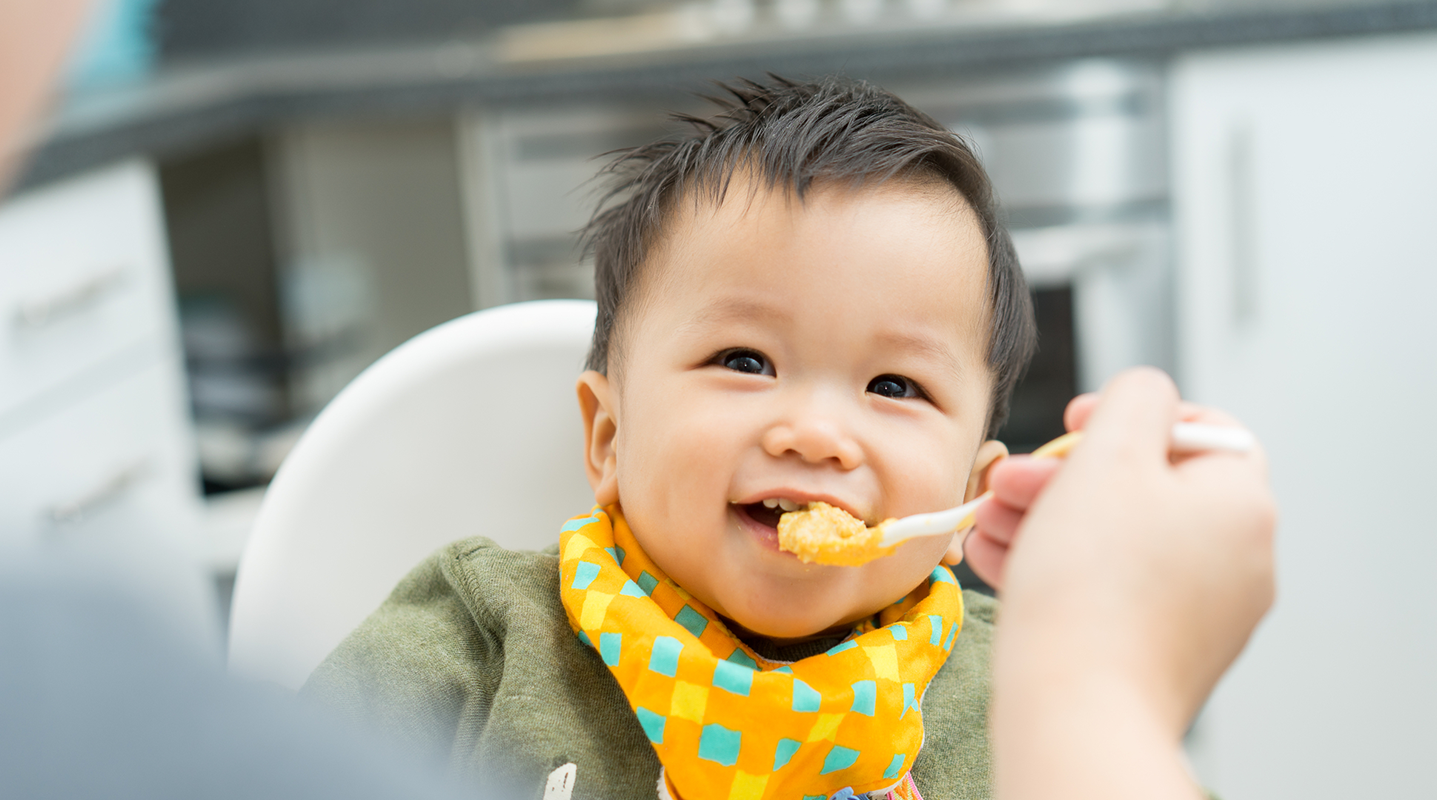How to Introduce Solid Foods to Your Baby
February 08, 2022

All babies spend the first four to six months of their lives getting their nutrition from breastmilk or formula. But as babies get older, many parents get excited — and nervous — to give them their first taste of solid foods.
Trying out new foods doesn’t need to be complicated. By following some simple guidelines, you can make mealtime fun for the whole family.
Signs Your Baby is Ready for Solid Food
Introducing foods too early can put your child at risk for choking and set them up to dislike eating solid foods. The American Academy of Pediatrics (AAP) recommends that your child meet these criteria before you start solid food:
- They can hold their heads up on their own while sitting.
- They show interest in eating or even try to eat food you have.
- They are double their birth weight or heavier than 13 pounds.
- They don’t try to push foods out of their mouth with their tongues.
If you try to give your baby a spoon full of food and they spit it out, that’s OK. Wait a week or two and try again.
What Foods to Introduce Your Baby to First
You have a lot of great options for first foods. No matter what you choose, make sure it is soft or pureed to reduce the risk of choking. You might give your baby:
- Pureed vegetables or fruit
- Pureed, iron-fortified infant cereal in breastmilk, formula or water
- Well mashed up avocado, banana or cooked sweet potatoes
Keep foods simple at first and try introducing new foods every few days. Remember, even if your baby doesn’t like a food at first, it is normal. Most babies need to try foods three or four times before they like them.
It's important to know that babies may gag from time to time, but this is completely typical and to be expected as they expand their oral experience with solids.
Give your baby a chance to pick up and explore these foods. Mealtime will likely be a mess for a while, but these early stages of eating are important for your child’s relationship with food
Remember, your child might not eat much, and that’s okay. Your child knows how much food they need to eat, so you don’t need to pressure them to eat more. Provide small amounts of a wide variety of foods at each meal and let your child take the lead.
If you are concerned about your child’s eating, you can always talk to your pediatrician. Some children may have trouble with oral motor control, sensory processing disorders or other issues that can make eating a variety of healthy foods difficult. Speech therapists, dietitians and other experts at Joe DiMaggio’s Children’s Hospital can help your child get the nutrition they need.
When it comes to using utensils, choose small shallow bowl spoons or infant spoons. Avoid large metal spoons as they may encourage too big of bites and are not always ideal for small mouths. Additionally, metal spoons may scrape against teeth as they emerge and result in negative experiences for babies.
Solids and Food Allergies
New research has revealed that exposing children to food allergens early can reduce their risk for allergies. You can give your child a little bit of peanut butter, egg, soy, fish and other food allergens before age six months.
When feeding your baby food allergens, keep the amount small (i.e., chickpea or pea sized cubes) and monitor your baby for any signs of allergy, like a rash.
Starting Finger Foods
When your baby can start bringing objects to their mouth, usually around 8 months, you can start giving them finger foods. You’ll want to make sure all foods are cut into chickpea or pea sized cubes and that each piece is soft.
Some great first finger foods include:
- Chopped, cooked vegetables that are soft enough to squish between your fingers
- Chopped, soft fruits like berries, banana, avocado or tomato
- Shredded chicken or fish
- Ground beef or turkey
- Pea sized cubes of tofu
- Cut-up pancakes
- Foods that dissolve with saliva to help baby learn how to chew like Cheerios or puffs
